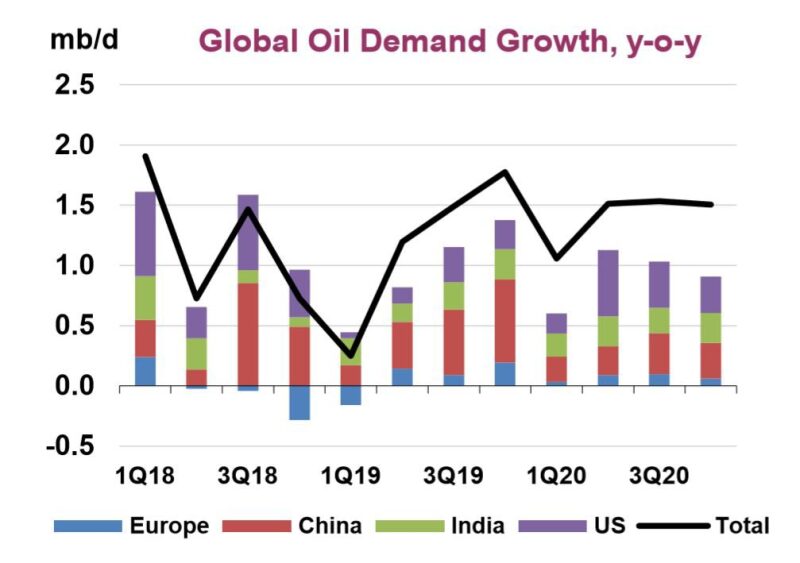Both the International Energy Agency (IEA) and OPEC have cut their estimates for 2019 world oil demand growth in their latest monthly reports.
OPEC predicts that global demand will rise by 1.14 million B/D this year, 70,000 B/D less than previously expected because of escalating trade disputes. “Throughout the first half of this year, ongoing global trade tensions have escalated," OPEC said in its report. "Significant downside risks from escalating trade disputes spilling over to global demand growth remain."
OPEC, Russia, and other producers have implemented an agreement since 1 January to cut output by 1.2 million B/D. They meet in late June or early July to decide whether to extend the pact.
OPEC also said its output fell in May as US sanctions on Iran added to the impact of the supply-cutting pact. Production by all 14 OPEC members dropped by 236,000 B/D to 29.88 million B/D, OPEC said.
IEA cut its demand growth estimate this month for a second consecutive month, based on worsening prospects for world trade. It now projects global demand to grow 1.2 million B/D for the year. In the first quarter, global growth was only 0.3 million B/D, according to the agency.

“The main focus is on oil demand as economic sentiment weakens. ...The consequences for oil demand are becoming apparent,” the IEA said in its June monthly oil report. “The worsening trade outlook (is) a common theme across all regions.”
The IEA forecast assumes the maintenance of US and Chinese tariffs imposed on goods in 2018, but the agency said it had not factored in further US tariffs announced in May.
The IEA also attributed lackluster demand growth in the first half of the year to a slowdown in the petrochemicals industry in Europe, warmer than average weather in the northern hemisphere, and stalled US gasoline and diesel demand.
IEA expects higher demand growth in the second half of the year, at 1.6 million B/D, based on robust consumption in the nondeveloped world and governmental measures to mitigate the economic slowdown. “Stimulus packages are likely to support growth in the short term. In addition, the major central banks have stopped or slowed interest rate increases, which should support growth in the second half of 2019 and 2020,” the report said.
IEA believes global oil demand growth will rise to 1.4 million B/D in 2020, supported by solid non-OECD demand and petrochemicals expansion.
On the supply side, IEA reported that global oil supply eased by 0.1 million B/D in May to 99.5 million B/D, down 2.8 million B/D from the November 2018 peak. IEA also said OPEC crude supply fell in May to its lowest level since 2014 as a result of US sanctions on Iran and Venezuela, the output cut pact by OPEC plus its allies, and fighting in Libya. Iranian production plunged to its lowest levels since the Iran-Iraq war in the 1980s.
IEA predicts that non-OPEC supply growth will accelerate from 1.9 million B/D this year to 2.3 million B/D in 2020, led by the US and supported by Brazil and Norway.

